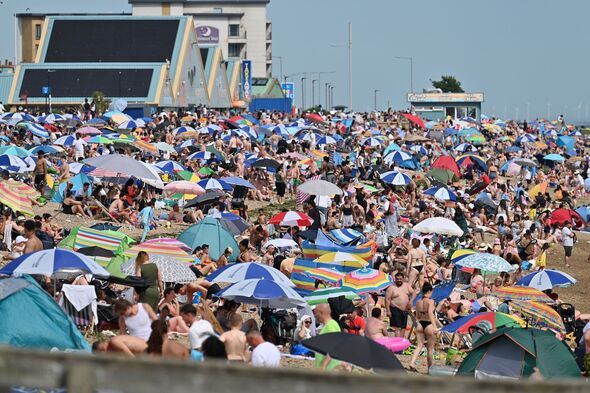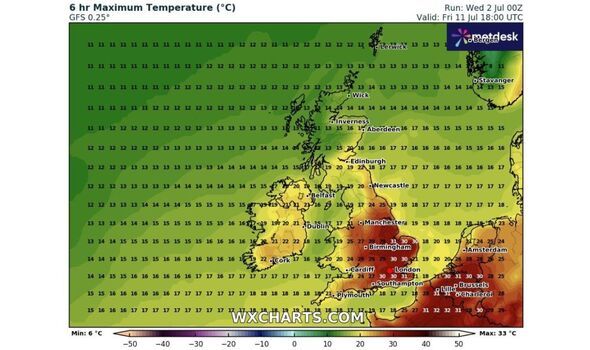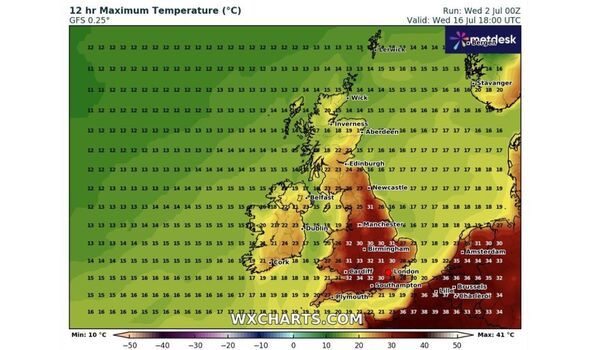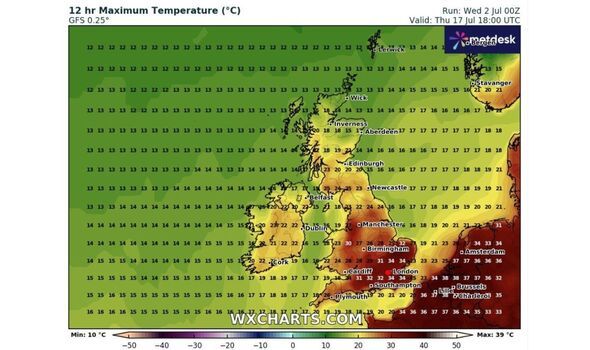
The UK experienced the hottest day of the year yesterday (Tuesday July, 1) with temperatures soaring as high as 35C. Now, according to weather maps by WXCharts, Brits should expect to see the scorching conditions throughout the month, with the weather agency forecasting temperatures to reach 30C by next week.
WXCharts forecasts between the period of July, 2 to July, 18, is filled with maps flashed orange and red indicating the warm temperatures yet to come. The hot weather will kick off as soon as July, 11, with Kent and Norfolk welcoming 31C, the highest of temperatures from 6pm.

WXCharts predictions show that July, 16 and 17 will be the hottest days of the period, with temperatures reaching up to 34C.
Maps for July, 16 show the large red spot stretch from Plymouth all the way to Edinburgh. Temperatures between 26C and 34C will impact the whole of England, whilst Scotland will be slightly cooler with temperatures ranging between the low 20s and high 10s.
High temperatures will continue into the next day. However, unlike the July 16, the bulk of it will be kept in the southeast, with Greater London, Essex, Kent being the hottest counties.
The Met Office Long Range Forecast for both Sunday, July 6 to Tuesday, July 15, and Wednesday, July 16 to Wednesday, July 30, also make mention of the chances of increased temperatures hitting the uk.


The earliest forecast notes that "temperatures are likely to be around average overall, with an increasing chance of warmth in the south as the period progresses".
While the one for the mid to end of month makes mention of a split in temperatures and rainfall between the northwest and southeast.
It added: "The potential for further occasional episodes of hot weather and thundery outbreaks, are considered likely to gradually give way to something more settled and dry overall through the second half of July. Temperatures are likely to be above average, with the greatest chance of very warm or hot spells in the south or southeast."
Full List of July dates where it will be 30C or higher:- Friday, July 11
- Saturday, July 12
- Sunday, July 13
- Monday, July 14
- Tuesday, July 15
- Wednesday, July 16
- Thursday, July 17
- Friday, July 18









